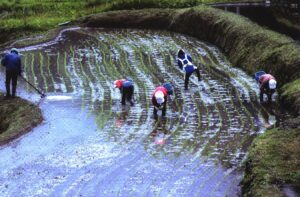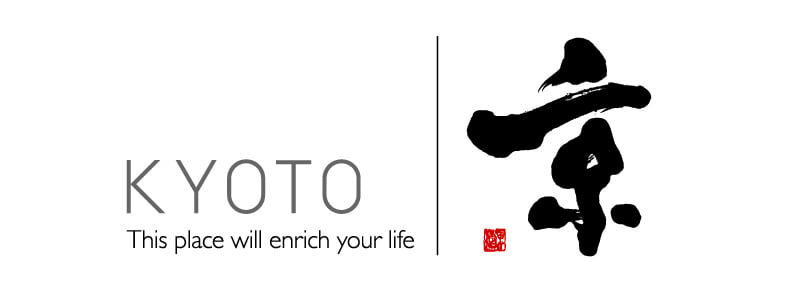Term archive

投稿タイプ:sightseeing
Wachi Wildflower Forest
This park makes use of the natural environment as-is across its area of 12 hectares. There are 900 differents types of plants, trees, and fruit trees growing in Wachi Wildflower Forest, making for some dramatic changes in appearance throughout the four seasons, and for many flowers to enjoy.
Wachi Wildflower Forest also offers a variety of experiential options, including 15 wildflower exhibitions a year, woodworking crafts, moss ball-making, flower-planting, and more. It's a wonderful place to take in the changing seasonal scenery of the wild plants and flowers.

投稿タイプ:sightseeing
Fringed Iris & Oriental Paperbush Meadow
Oitomi is a town in Ayabe City in the north of Kyoto Prefecture, where there's a forest with dense fields of oriental paperbush (mitsumata) and fringed iris (shaga, Iris Japonica) flowers. These fields were discovered in 2015 by a photographer, and are a rare and beautiful sight. From the end of March to mid-April a sea of oriental paperbush flowers bloom and cover about 1.5 hectares of land. Oriental paperbush is a deciduous shrub that grows 1-2 meters tall, with little scented yellow flowers which are made up of four sepals with no petals, and a fibrous bark that has historically been used as material for washi (Japanese paper) and paper money. From the end of April until mid-May, after the oriental paperbush season, the mysterious-looking, snow white fringed iris bloom and cover the forest floor. In some parts of the forest, there's also a 400 meter-long "corridor of irises." The flowers are short-lived and last just a single day, but every day new flowers bloom to replace them. During the flowering season from the end of March to mid-May, you can also find local goods, tea, coffee, and sweet red bean-based soup at the Hanayadori rest area, which is open on Wednesdays, Fridays, Saturdays, Sundays, and holidays from 10:00 a.m. to 3:00 p.m.. While you don't need to hike to see the flowers, the forest is not paved please make your visit in shoes you don't mind dirtying.

投稿タイプ:sightseeing
Yakuno Highland
The Yakuno Highland, located in Yakuno-cho, Fukuchiyama City in the northwest of Kyoto Prefecture, is a highland area created by a volcanic eruption of the prefecture's sole volcano, Mt. Takura (Mt. Takara).
The Yakuno district is located on the border with Hyogo Prefecture, surrounded by nature and mountains of some 700 meters in height.
In spring, many people come to see the weeping cherry trees at the Kyoto Prefectural Tree Planting Center, commonly known as the "weeping cherry of Yakuno-cho."
Once the cherry blossom season has ended, Shirai Omachi Wisteria Park in neighboring Asaku City, Hyogo Prefecture sees a bloom of wisteria the greatest of its size in the mountains here. In summer, the Yakuno area becomes a retreat from the heat, and in autumn the leaves are a colorful sight. With its beautiful natual scenery throughout the four seasons, the Yakuno area is visited by many throughout the year.
At Nosho-no-sato Yakuno Roadside Station in particular, visitors can enjoy some of the best of Woodland Kyoto with its hot springs, overnight accommodation, activities, dining, and shopping.

投稿タイプ:sightseeing
Kewara District
In the Kewara District in Oe-cho, Fukuchiyama City, a large number of rice paddies of various sizes spread irregularly across the steep slope of this mountainous region. These are known as terraced rice fields ("tanada"), and the gentle curves drawn by the rice paddies as they follow the slope of the hillside, and the beautiful meandering lines of the farm roads together make for quite a lovely sight to behold. Visitors can enjoy the sights of the different seasons here in Japan, with the water-filled rice paddies reflecting the blue of the sky and the white of the clouds above during planting season, and the rice stalks shining golden during harvest season. The landscape here reflects the scenery of legends and history in the Japanese countryside.
Since 1997, the Kewara District has held activities aimed at preserving the rice terraces, like the Rice Terrace Farming Tour. In July 1999, the terraces here were selected as one of the "100 Best Rice Terraces in Japan" by the Ministry of Agriculture, Forestry and Fisheries. In recent years, the locals have introduced a rice terrace ownership system, in order to make use of non-farming land. A walking path has also been installed, and a water mill has been restored, which, together with some flowers, has added some playfulness to the scenery here.

投稿タイプ:sightseeing
Izumo Dai-jingu Shrine
Izumo Dai-jingu Shrine was the most important shrine in what was once known as Tamba Province. Princess Mihotsu is the deity enshrined here, and because she was sent by the sun goddess Amaterasu to be the bride of the god Okuninushi, she has become famous as a god of matchmaking. The main shrine building is said to have been built by Ashikaga Takauji (the first shogun of the Ashikaga shogunate), and it is an Important Cultural Property. The Izumo Furyu Hana-odori dances, held annually on April 18th, are said to be Shinto rituals to bring rain, and they see an elaborate display of traditional flower hats, noble clothing from ages past, and white tabi socks on the dancers as they move to drum beats.

投稿タイプ:sightseeing
Kuwayama-jinja Shrine
Kuwayama Shrine in Kameoka City, located in the Woodland Kyoto area, was built in 709. The temple sits in the Kameoka basin which is said to have been a lake long ago leading to the region being perfect for farming. Kuwayama literally means "hoe mountain" and it is said that the shrine gets its name from the belief that the kami Takamitsu Omi used a hoe, or "kuwa", to carve out the valley and piled the dirt up to make the surrounding hills.
The shrine actually contains two shrines. The Kuwayama shrine, which enshrines Takamitsu Omi (Mikoto Onamuchi), and the Hachiman shrine, which enshrines Betsuson Honda (Mikoto Honda), both of which are designated by Kyoto Prefecture as registered cultural properties. There are also over 1,000 maple trees on the grounds; making it a great place to visit in the fall.

投稿タイプ:sightseeing
Nango Park
The row of cherry trees planted along the moat of the Tamba Kameyama Castle Ruins make this area ideal for taking a stroll. The weeping cherry tree in the center of the park is beautifully lit up at night, making it appear to float in the darkness.

投稿タイプ:sightseeing
Nanatani-gawa River (Yawaragi Road)
Approximately 1,500 blossoming Somei-yoshino cherry trees line both banks of the Nanatani-gawa River, extending for about 1 km and making this a popular blossom-viewing location. Adjacent to the river in Sakura Park, there are approximately 280 cherry trees of 28 varieties. This is also the location of the annual Cherry Blossom Festival and associated light-up events that draw many people to see the beautiful blossom each year.
Approximately a 25 minute walk from here, you'll also find Izumo-Dai-jingu Shrine, the highest ranking Shinto shrine of the Tamba region, which has recently gained popularity as a powerful spiritual location.

投稿タイプ:sightseeing
Rurikei Valley
Rurikei Valley, a nationally designated place of scenic and historical beauty, is a long ravine (500 meters tall and approximately 4 km long) with a spring deep in the mountains. Heading upstream towards Lake Tsuten-ko, you'll find the "12 Scenic Spots of Rurikei," including "Meibaku" (lit. "crying waterfall"), "Soryuen" (lit. "dragon pair chasm") and "Gyokusoban" (lit. "basin of running jewels")—waterfalls and cliffs with names designed to reflect their nature. So enchanting is the beautiful highland scenery to visitors as it changes throughout the seasons that Rurikei Valley has even been called "the Karuizawa of Kansai" (Karuizawa is a mountain resort in Nagano Prefecture).

投稿タイプ:sightseeing
Kyotamba Wine
In the Kyotamba Winery, you can see the full winemaking process, from fermentation all the way to the finished product, as well as enjoy refreshments afterwards.
In the restaurant, you can enjoy cuisine made with Tamba Beef as well as various wines and cheeses. The shop also has a lot of items, such as containers for small items, that are useful for wine connoisseurs.
You can also take a tour of the vineyards to see the grapes growing on the vine.

投稿タイプ:sightseeing
Make-jinja Shrine
Make-jinja Shrine was built long ago, and it is a shrine listed with the highest rank by the Japanese government. In 1079, it was visited by the Emperor Shirawa, and the shrine was honored with an imperial scroll, "Funai Dai-ichi Make-jinja." During the Edo period (1603-1868), the shrine also became a place of prayer for Koide, daimyo of the Sonobe Clan. All of the shrine buildings date to the Edo period, and both the main shrine and its auxilliary buildings have thatched roofs. The shrine grounds have a relaxed and sacred air to them.

投稿タイプ:sightseeing
The Fog Terrace
The "Tamba Fog" that appears across the Kameoka Basin from autumn to spring is a unique sight for which Kameoka is known.
In the morning in particular, the scenery as viewed from the Fog terrace is wonderful, and visitors are particularly invited to enjoy it.
We recommend that you check the fog conditions online before heading out.
During fogless seasons, this is also a wonderful location from which to overlook all of Kameoka.
